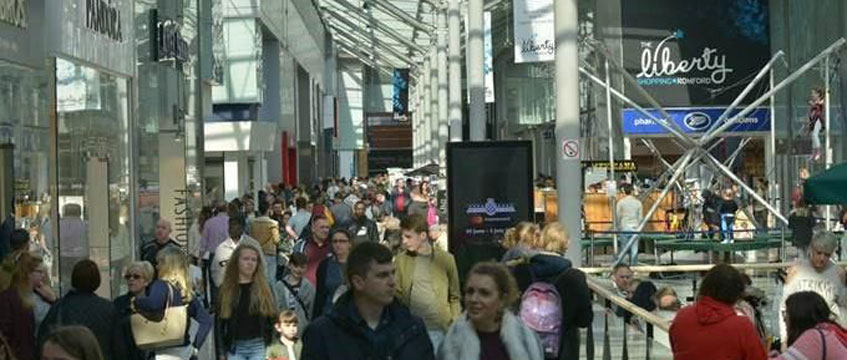Telecommunications – Electronic Communications Code – Code rights – Claimant infrastructure provider holding leases of three telecommunications sites – Claimant seeking new Code agreement in respect of telecommunications sites – Parties making references to Upper Tribunal to determine disputed terms of agreement – Whether respondent site provider responsible for safety of site and apparatus on land – Terms determined accordingly
The claimant was a wholesale infrastructure provider which owned equipment such as masts, conduits and cabinets all over the UK and had licence agreements with providers of mobile phone networks which enabled them to use the equipment.
The respondent was part of a multinational group of companies in the business of investing in land and letting it for use as telecommunications sites. Much of its land in the UK was leasehold, where the lease was of a site already let to either a provider of a mobile network or an infrastructure provider under a Code agreement.
The respondent held leases of three sites known as Audley House, Port Talbot and Huntingdon. They were small sites at ground level in industrial areas, with a mast and cabinets, which had been operated by the claimant for some years under leases granted pursuant either to schedule 3A to the Communications Act 2003 (the Code) or to schedule 2 of the Telecommunications Act 1984 (the old Code).
On each of the sites, the Code agreement had come to an end, and new agreements had to be made. A new 15-year agreement in each case was not opposed but the parties could not agree all the terms. Two references were made to the Upper Tribunal (UT) to determine the disputed terms concerning, among other things, the responsibility of the respondent, as owner and occupier of the sites, for the safe operation of sites and the apparatus thereon.
Held: The terms were determined accordingly.
(1) As a general principle, landowners had no more responsibility for the safety of the antennae on their roof, or the mast in the corner of their car park, than they had for the electricity pylons that marched across their fields or for the public sewer that ran beneath their home. Landowners were obliged to suffer the presence of equipment and conduits on their land for the benefit of all, but the safety of that equipment and the management of any risk that it posed for the public remained the responsibility of those who operated it. The question was whether the general principle might give way to other considerations where the landowner was itself in the business of telecommunications.
(2) Paragraph 25 of the Code ensured that, if the site provider suffered any loss or damage as a result of the presence of the site, the operator had to compensate it. The claimant also had additional contractual liabilities to the respondent in the form of certain covenants in the draft leases. The clear policy and the undoubted effect of the Code and of the general law was that if something went wrong, as a result of the presence of the site, the operator would pick up the tab.
It was no part of the policy of the Code that such a site provider be responsible, let alone criminally liable, for the safety of a telecommunications site on its land. There was also no suggestion of any risk of such liability under the old Code. Under the new Code, the idea that the site provider was to share with the operator the responsibility for the safety of the equipment and operations on the site was even less plausible than it was under the old Code. Not only were most site providers without expertise in relation to telecommunications, but also, they received consideration calculated on the “no network” assumption, which was markedly less generous than was consideration under the old Code.
The fear of civil liability for site providers was wholly unrealistic where the Code agreement required them to give up exclusive possession of the site and gave them no control over what went on there. Unless the parties agreed terms that enabled or obliged the site provider to control, manage or even supervise what the operator did, or unless the tribunal imposed such terms, concerns about civil liability were illusory.
(3) The respondent’s duties under sections 3 and 4 of the Health and Safety at Work Act 1974 were to take all reasonably practicable steps to eliminate or minimise risk to employees and visitors. The duty under section 3 was to protect persons affected by the conduct of the undertaking, which in the present context meant “enterprise” or “business”. In general, site providers could not be liable under that provision. The key concept in section 4 was control. More than one person might be in control of premises or of the means of access to them, and the duty was imposed upon them all. Liability did not arise out of ownership alone, but the ambit of section 4 was far wider than section 3 and any degree of control was sufficient.
Site providers who had granted exclusive possession of a site would often remain in possession of the access to the site. With or without the Code agreement, such a landowner was in control of that means of access and had a duty to ensure that it was safe so far as was reasonably practicable. However, where a site provider was not entitled to any say in what the operator did while it was using the access to approach the site, it would not be reasonably practicable for it to prevent the operator from doing something that made the access unsafe. The duty under section 4 arose from control; the need to control did not arise from the possibility that there was a duty.
(4) What the respondent or any other site provider had to do depended upon the terms of the Code agreement. The respondent was given unrestricted access to each site but none of the existing leases required the claimant to make a request before going onto the site. As to future leases, the respondent was given unrestricted access and was left free to confer the same right on its own lessees. The intermediate leases revealed no concern about access to the sites. There was no evidence that the superior landlord had imposed any responsibility upon the respondent to control the safety of the sites or the access to them. The respondent’s relationship with the superior landlord was not a reason for the tribunal to impose terms that made the respondent responsible for safety at the sites. Accordingly, the claimant and its customers were responsible for site safety.
Jonathan Seitler QC and Emer Murphy (instructed by Gowling WLG (UK) LLP) appeared for the claimant; Wayne Clark, Fern Schofield and Mike Atkins (instructed by Eversheds Sutherland (International) Ltd) appeared for the respondent.
Eileen O’Grady, barrister
Click here to read a transcript of On Tower UK Ltd v AP Wireless II (UK) Ltd









